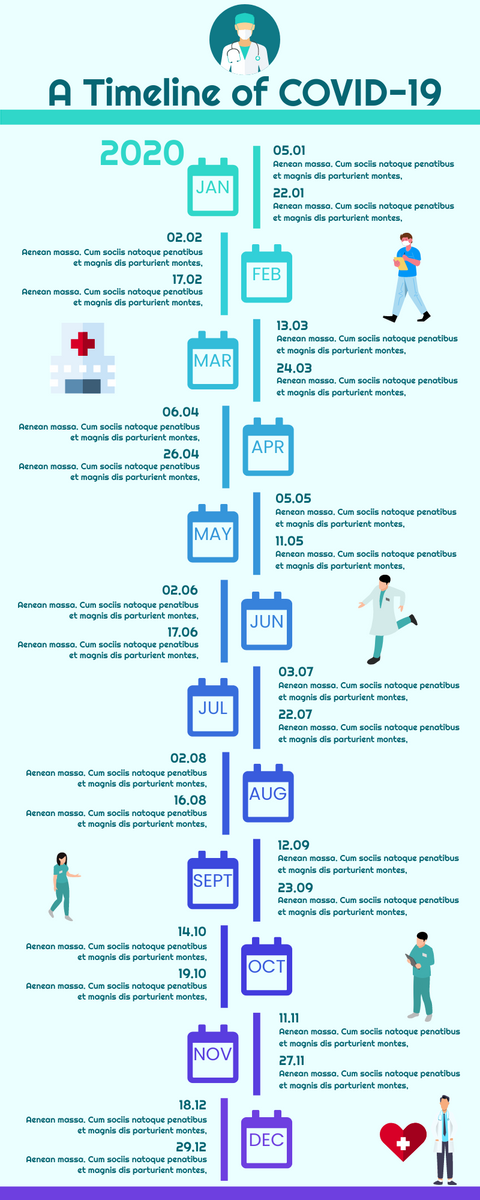Timeline of COVID-19 Infographic
The “Timeline of COVID-19 Infographic” is a comprehensive visual representation of the pandemic’s history. The infographic provides a detailed timeline of major events, including the first reported cases, global lockdowns, vaccine rollouts, and much more. The design combines striking visuals with clear and concise text to present complex information in an easy-to-understand format.

Customize this Infographic Template
Visual Paradigm Online is a powerful online infographic maker that enables businesses and organizations to create high-quality infographics like this one. With its intuitive drag-and-drop interface and extensive library of customizable templates, Visual Paradigm Online is the perfect online infographic tool for beginners and experienced designers alike.
Using Visual Paradigm Online, businesses can quickly create custom infographics that perfectly match their brand identity. The platform’s extensive graphic design template library includes a wide range of templates, including timelines, charts, and graphs, making it easy for users to create any type of infographic they need.
In conclusion, Visual Paradigm Online is a versatile and user-friendly online infographic tool that can help businesses and organizations create high-quality infographics quickly and easily. To learn more about Visual Paradigm Online’s graphic design editor and to access its extensive graphic design template library, visit the links below:
- More about Visual Paradigm Online’s graphic design editor:
https://online.visual-paradigm.com/infoart/ - Graphic design template library:
https://online.visual-paradigm.com/infoart/templates/
Can COVID-19 be transmitted through food?
Answer: According to the World Health Organization (WHO), there is currently no evidence to suggest that COVID-19 can be transmitted through food or food packaging. COVID-19 is a respiratory virus that primarily spreads through respiratory droplets when an infected person talks, coughs, or sneezes. However, it is still essential to practice good food safety measures, such as washing your hands before and after handling food, properly cooking and storing food, and avoiding cross-contamination, to prevent the spread of other foodborne illnesses.

